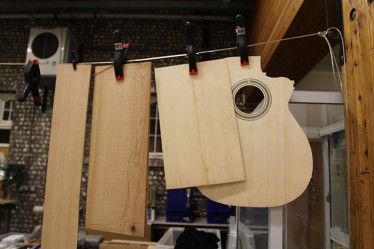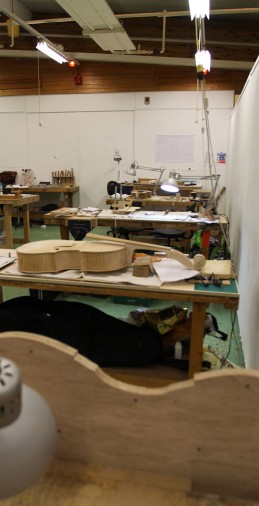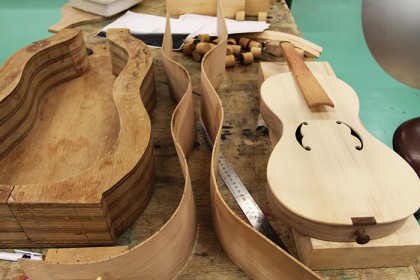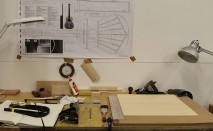I’ve just come back from West Dean College where I was teaching a three day course on Layering Imagery. My classes always take place in the same space, the Stone Room, which leads off from the main workshop. As a result of walking through this workshop every day to get to and from class we are always very aware of what is going on in there, and so I was intrigued to see the technicians opening up the bank of dividing doors in the workshop to set up a double size space with workbenches and equipment.
What course could require thirty workbenches and such an enormous space?!
Later that day I saw five tutors, huddled up in the middle of the vast room having a very involved conversation. Then, through the closed door, we started hearing sounds…. long drawn out tones which at first sounded like furniture being pulled across the floor, and then clean tones singing out and squeaky little burps of sound in the background. Every so often we’d hear a strumming and a little tune would emerge from the cacophony of other, more familiar, workshop sounds.

All became clear when we emerged for supper some hours later. The workshop had come to life with the largest course I have ever seen at West Dean – five tutors teaching thirty two students to make all sorts of musical instruments!
We saw half made cellos reclining on the benches while being administered to by their makers. We saw violins being formed around tight curves with a corona of clamps pinning them in. We saw the constituent faces of a guitar hanging on a washing line as though having been put out to dry. We saw intricate internal parts to some unfinished and unidentifiable instrument.
I found out later this was an annual 9 day course at the college which had been going for years. Students loyally returned year after year to work on their handmade instruments – one student had been coming for the last 27 years! In some cases people who started out as students eventually came back as tutors to continue their collective marathon of instrument making.










